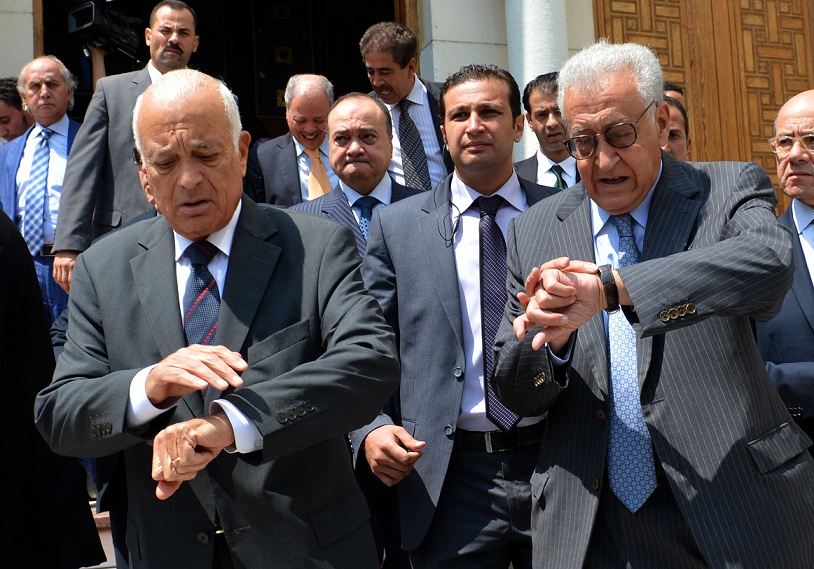The “Islamic State” militant group recently smashed several art pieces at the Palmyra UNESCO World Heritage site, in the Syrian city of that name. Even more brutally, they beheaded 82-year-old Khaled Al-Assad, one of Syria’s most respected archaeologists, who had been the keeper of Palmyra for more than 50 years.
In Yemen, the damage to three out of four United Nations World Heritage Sites is one more of the unfortunate consequences of a war that has already killed over 2,000 people and displaced more than 1 million others. The damage to the sites, listed as cultural heritage of humanity by the United Nations Educational, Scientific and Cultural Organization (UNESCO), is a sad reminder of the brutality of war.
The Yemeni heritage sites have been bombed by the Arab coalition forces, with United States support. The old city of Shibam, which dates to the 16th century, is one of the affected sites. One of the best examples of urban planning based on the principle of vertical construction, the city is known as the “Manhattan of the desert”, and is characterised by sun-dried mud brick tower houses which rise out of Wadi Hadramaut.
Also affected is the city of Zabid, which was the capital of Yemen from the 13th to the 15th centuries, and home for centuries to a famous Islamic university. It played a critical role in the spread of Islam, and is of outstanding archaeological and historical interest for its domestic and military architecture.
Sanaa, Yemen’s capital is the third city affected by the bombings. Located at an altitude of 2,300 metres and with a population of over 2 million people, Sanaa is one of the oldest cities in the world. It has distinctive architectural features, notably expressed by its multi-story buildings decorated with geometric patterns. The city was an important crossroads of merchants straddling the Middle East, Asia and Africa.
Last May, the regional museum of Dhamar, a city located 100 km south of Sanaa, was hit by a bomb. It destroyed 12,000 art pieces, some 8,000 years old, thus cancelling 30 years of effort, stated Lamya Khalidi, a researcher at the French National Center for Scientific Research (CNRS), who has extensive experience in Yemen.
“This museum has just been obliterated from the air. In a matter of minutes, the irreplaceable work of ancient artisans, craftsmen and scribes–not to mention the efforts of Yemeni and foreign researchers who have dedicated years of their lives to studying and preserving this legacy–were pulverised,” she stated.
The amount of destruction of cultural monuments and artefacts in recent times is widespread. In 2001, the Taliban blew up two 1,700-year-old statues of Buddha carved into a cliff in Afghanistan’s Bamiyan valley. Both were the tallest statues of Buddha in the world.
In 2012, Islamists destroyed at least half of roughly 600-year-old shrines in the city of Timbuktu, in Mali, also a UN World Heritage Site, before an international force pushed the militants out. IS is responsible for the destruction of the ancient Assyrian city of Nimrud, in northern Iraq. As they did in other cities it destroyed, IS profits from the sale of antiquities.
In 2015, IS destroyed the city of Hatra, an Iraqi city-state from the Roman era, also a UN World Heritage site. “The destruction of Hatra marks a turning point in the appalling strategy of cultural cleansing underway in Iraq,” observed Irina Bokova, UNESCO’s director-general.
Although Muslim fundamentalists are to a large extent responsible for the destruction of important monuments and sale of many artefacts, one shouldn’t forget the role that the US-led war in Iraq had in the destruction and looting of important ancient cultural pieces of art. American occupying forces allowed Iraq’s National Museum in Baghdad to be looted without any effort to protect its valuable artefacts.
According to Ihsan Fethi, an Iraqi architect who was chairman of the School of Architecture in Baghdad (1986-1991) and a member of the Supreme Committee of Cultural Heritage of Iraq, some of former president George W. Bush’s advisors resigned because the US and other invading countries didn’t do anything to protect Iraq’s historical sites. Fethi estimates at 35,000 the number of small and large items missing from the National Museum of Iraq. Only a small amount of those artefacts have been returned to Iraq.
The cultural price paid show the tremendous damage wrought by hatred and intolerance. Of the 1,007 known World Heritage sites, 48 are now in danger of being destroyed. Unless all countries agree on a policy of respect for ancient sites and cultural artefacts, wars not only will devastate and destroy people’s lives, they will also destroy the culture that is part of its past and allows people to develop and flourish.
Dr Cesar Chelala is a winner of an Overseas Press Club of America award



